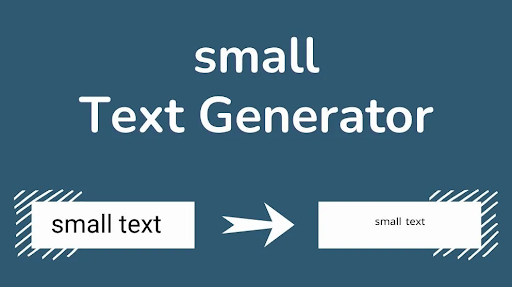Table of Contents
ToggleChoosing the best text to small generator for your needs depends on a variety of factors such as the purpose of the generated text, the quality of the output, the size of the generated text, and the language capabilities of the generator. Here are some tips to help you choose the best tool for your needs:
Determine your purpose: The first step in choosing this tool is to determine the purpose of the generated text. Do you need it for creative writing, social media posts, or product descriptions? Different text generators specialize in different types of text, so make sure you choose one that fits your purpose.
Check the quality of the output: Before choosing this tool it is important to check the quality of the output. Look for generators that produce coherent and grammatically correct text. You can do this by testing the generator on sample inputs and evaluating the output.
Consider the size of the generated text: Some tools produce only a few words or sentences, while others can generate longer pieces of text. Depending on your needs, you may want to choose a generator that can produce longer pieces of text.
Evaluate the language capabilities: Language capabilities are an important factor to consider when choosing a text to small generator. Some generators are capable of producing text in multiple languages, while others may only work in a single language. Make sure you choose a generator that can produce text in the language you need.
Look for user reviews: Finally, look for user reviews of this tool you are considering. Reading reviews from other users can give you a better idea of the strengths and weaknesses of the generator and help you make an informed decision.
By considering these factors, you can choose the best tool for your needs.
The history of small text generators and how they evolved over time:
- Small text generators, also known as text transformers or language models, have their roots in the early days of artificial intelligence research. The earliest text generators were rule-based systems that followed pre-defined rules to generate text. These systems were limited in their ability to generate complex text and required a lot of manual effort to create and maintain the rules.
- In the late 1990s and early 2000s, researchers began developing statistical language models that used machine learning algorithms to learn from large datasets of text. These models could generate more natural-sounding text than rule-based systems and were more adaptable to different languages and contexts.
- In 2013, Google introduced the neural network language model, which used deep learning techniques to model the statistical relationships between words in a sentence. This breakthrough allowed for the creation of much more sophisticated text generators that could produce coherent and grammatically correct text.
- The most famous example of a neural network language model is OpenAI’s GPT (Generative Pre-trained Transformer) series. The first GPT model was released in 2018, and since then, several improved versions have been released, each with more advanced capabilities.
- Today, small text generators are widely used in a variety of applications, including chatbots, virtual assistants, automated content creation, and natural language processing. They have revolutionized the field of language generation, making it possible to produce human-like text at scale and with minimal human intervention.
How to use small text generators for social media:
- Small text generators can be an excellent tool to create content for social media. Here are some tips for using small this tool effectively for social media:
- Identify your audience: Before using this tool, identify your target audience on social media. This will help you create content that is relevant and engaging to your audience.
- Choose the right generator: There are many different small tools available, and each one has its own strengths and weaknesses. Choose a generator that is best suited to the type of content you want to create, such as captions, hashtags, or short social media posts.
- Use keywords: When using this tool, be sure to use relevant keywords to help the generator understand the context of your post. This will help the generator create more accurate and relevant text.
- Edit the output: Small text generators are not perfect, and sometimes the generated text may not be exactly what you need. Be prepared to edit the output to make it more suitable for your needs.
- Use sparingly: While the tool can be a helpful tool for creating content, don’t rely on them too heavily. Your audience will quickly notice if your content is repetitive or lacks originality.
- Be creative: Don’t be afraid to experiment with different types of content and to u
- Overall, this tool can be a valuable tool for creating engaging and relevant content for social media. By using them effectively and creatively, you can build a strong social media presence and connect with your audience in meaningful ways.
Conclusion:
In conclusion, small text generators have evolved over time from rule-based systems to sophisticated neural network language models capable of producing coherent and grammatically correct text. Today, small text generators are widely used in a variety of applications, including social media, chatbots, virtual assistants, automated content creation, and natural language processing.
When using this tool for social media, it is important to identify your target audience, choose the right generator, use relevant keywords, edit the output as necessary, and be creative. With these tips, you can create engaging and relevant content for social media and connect with your audience in meaningful ways.
Regenerate response
